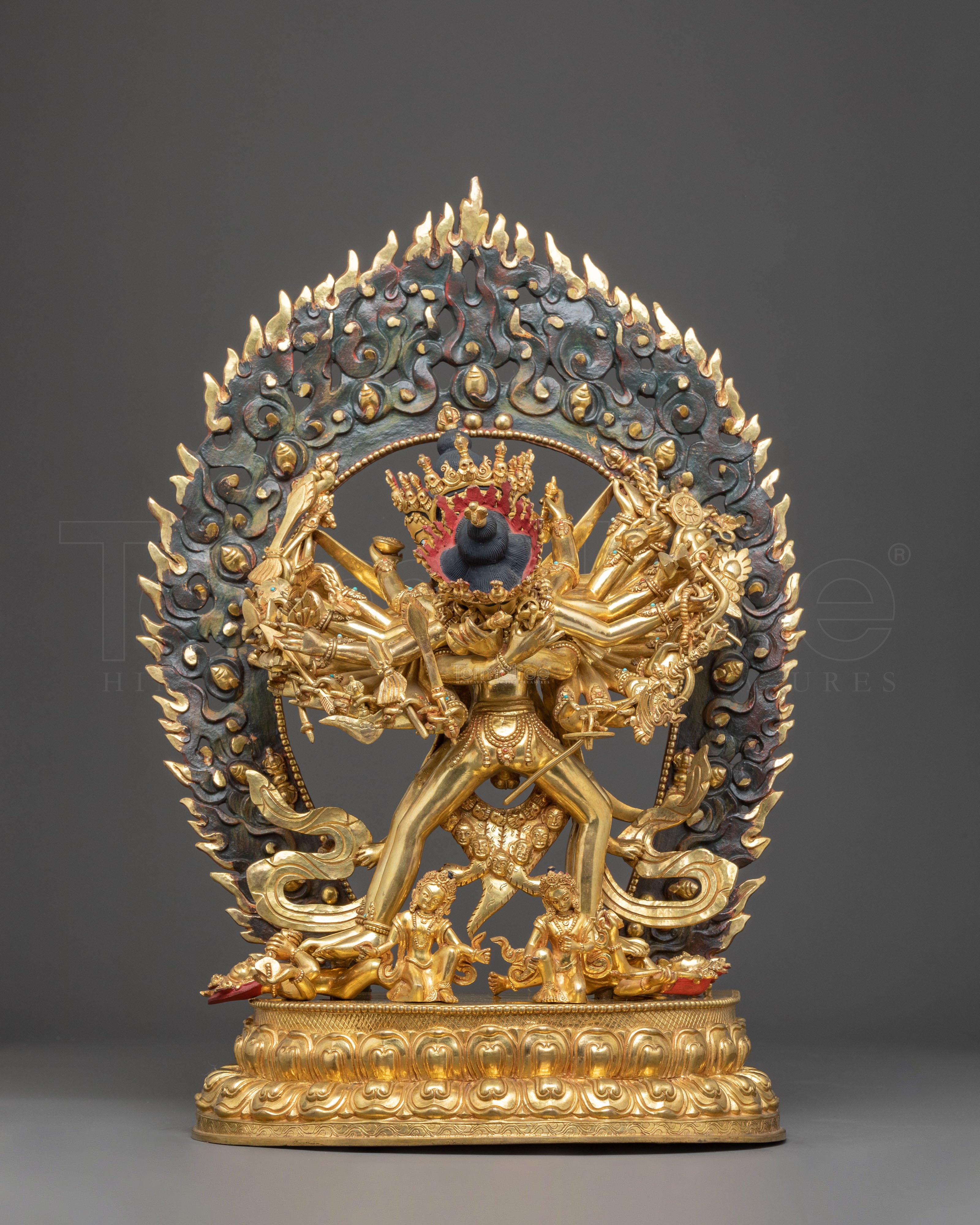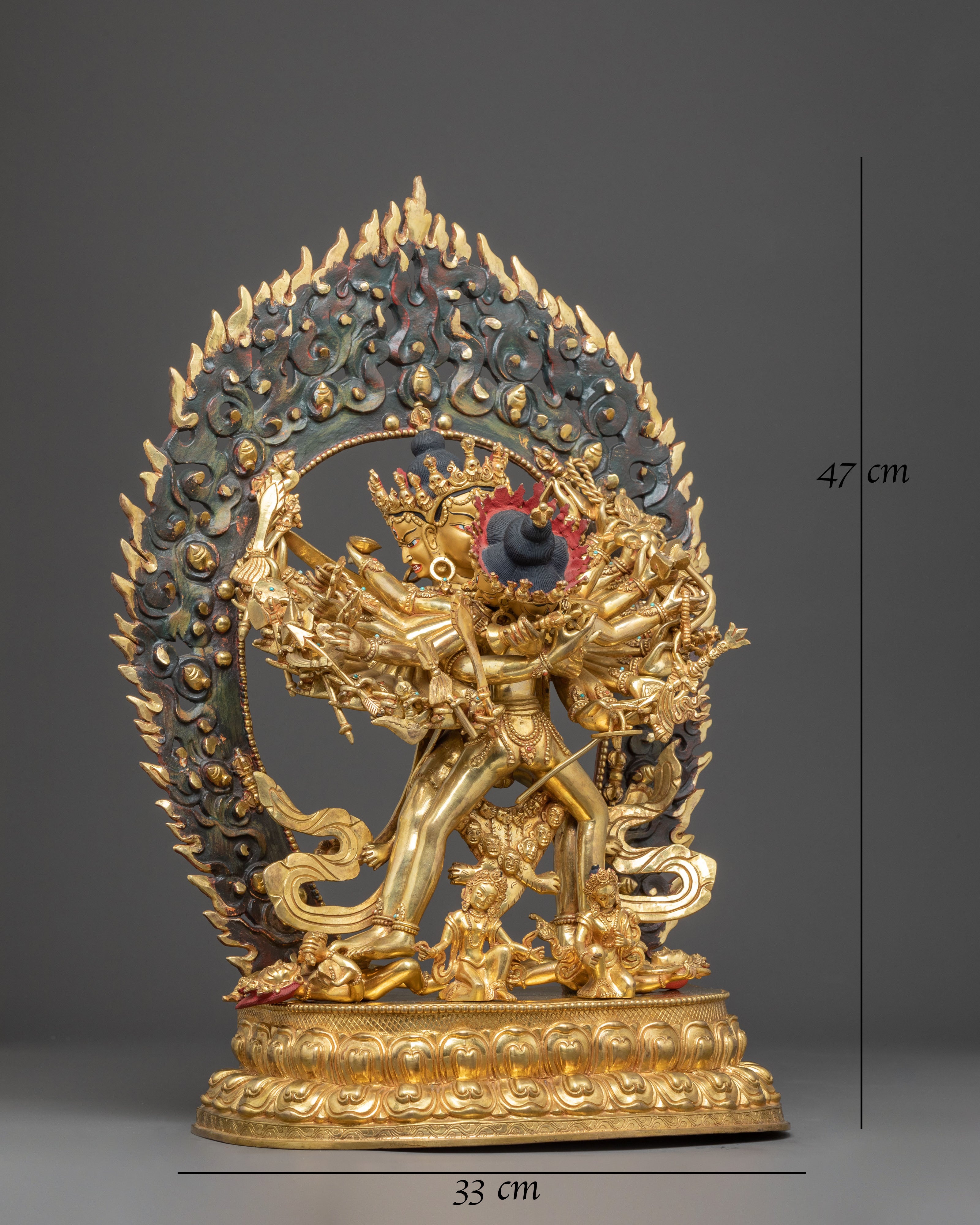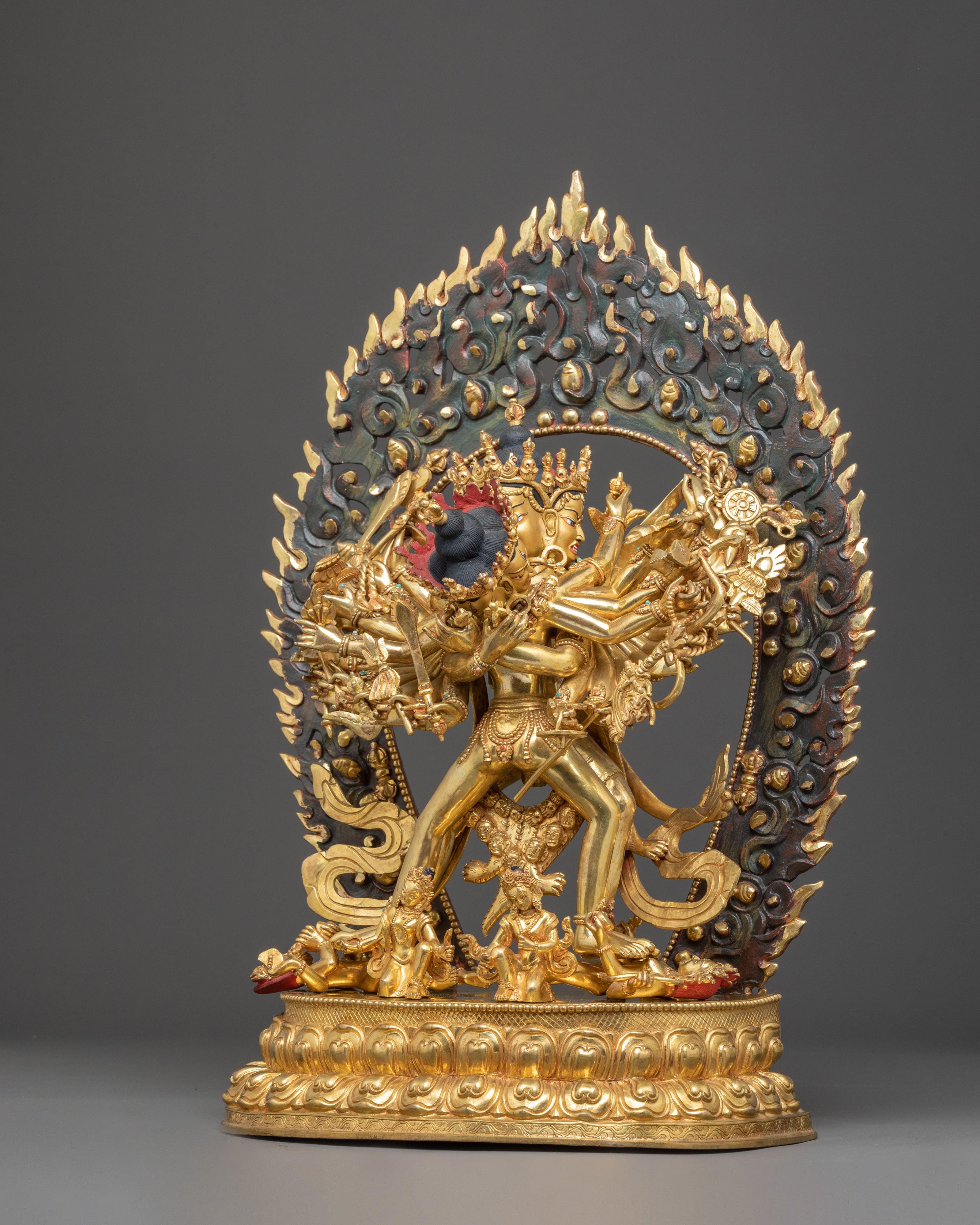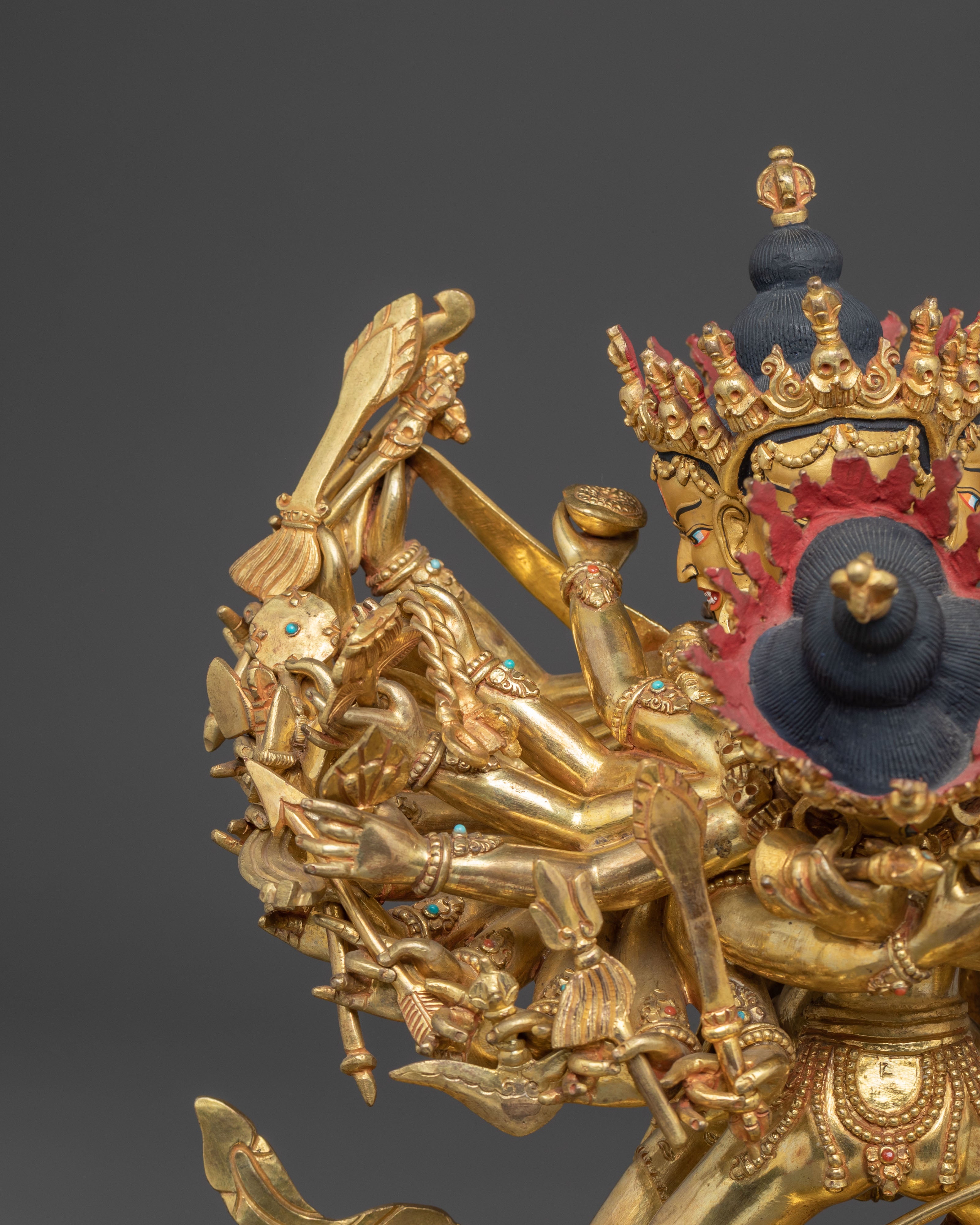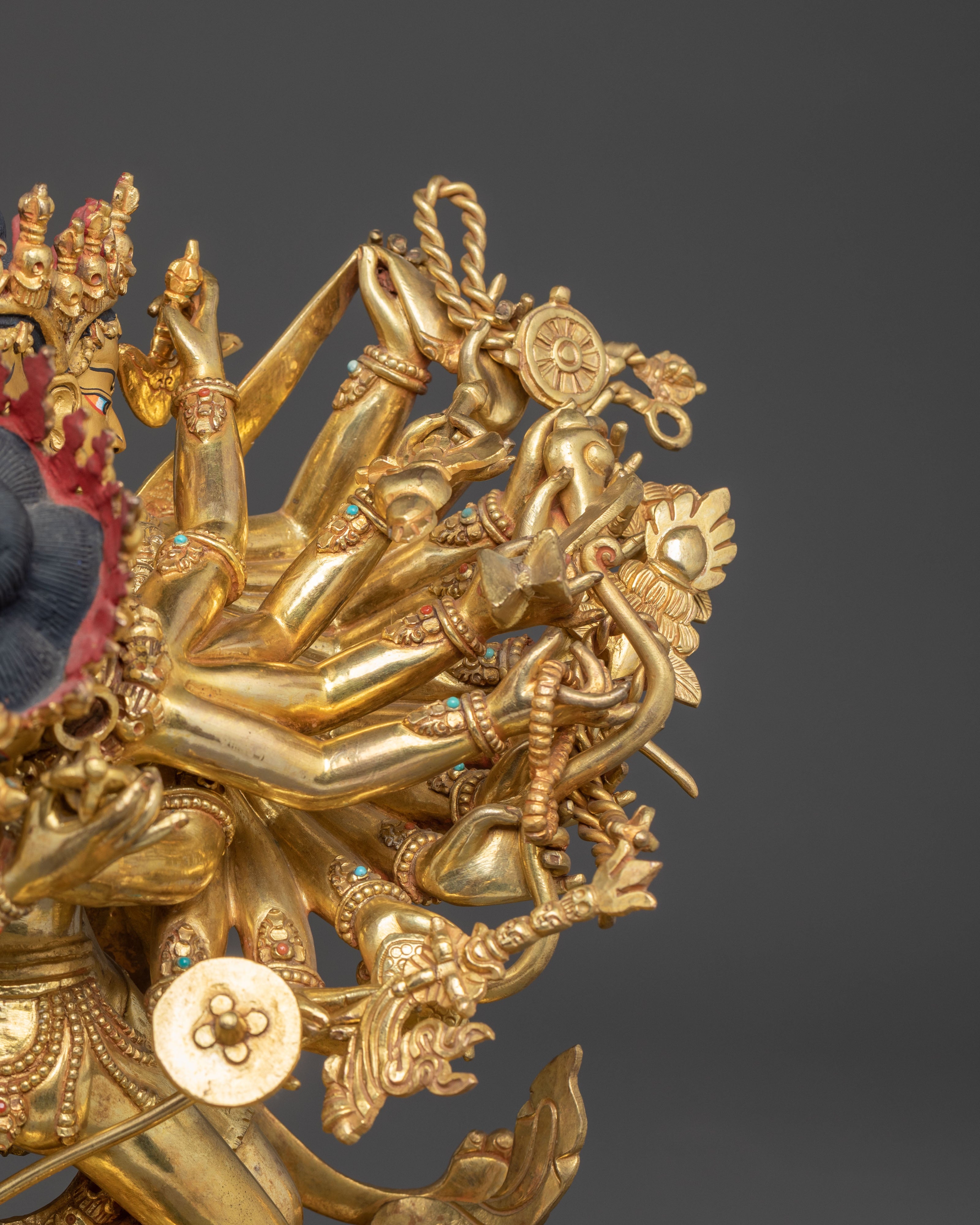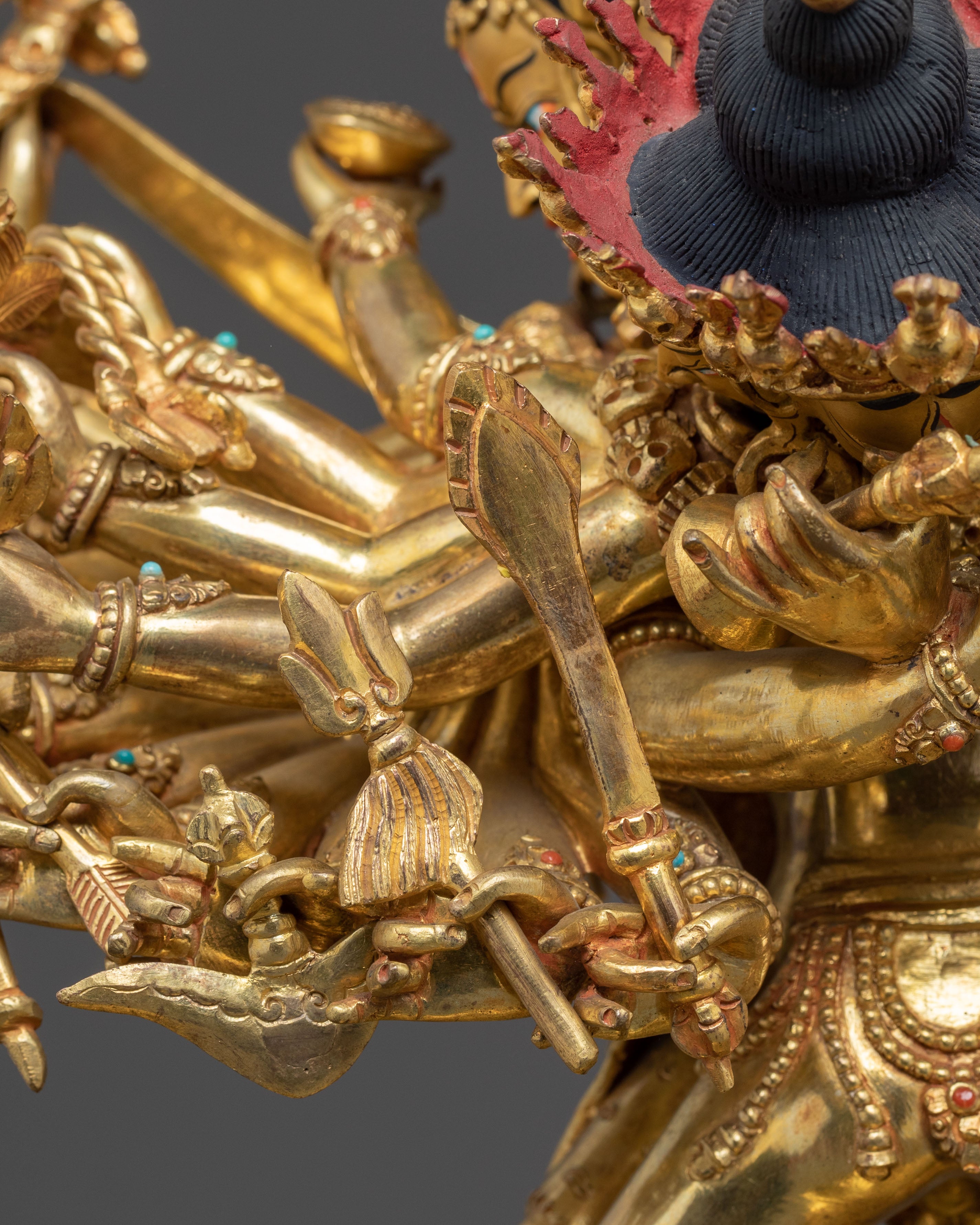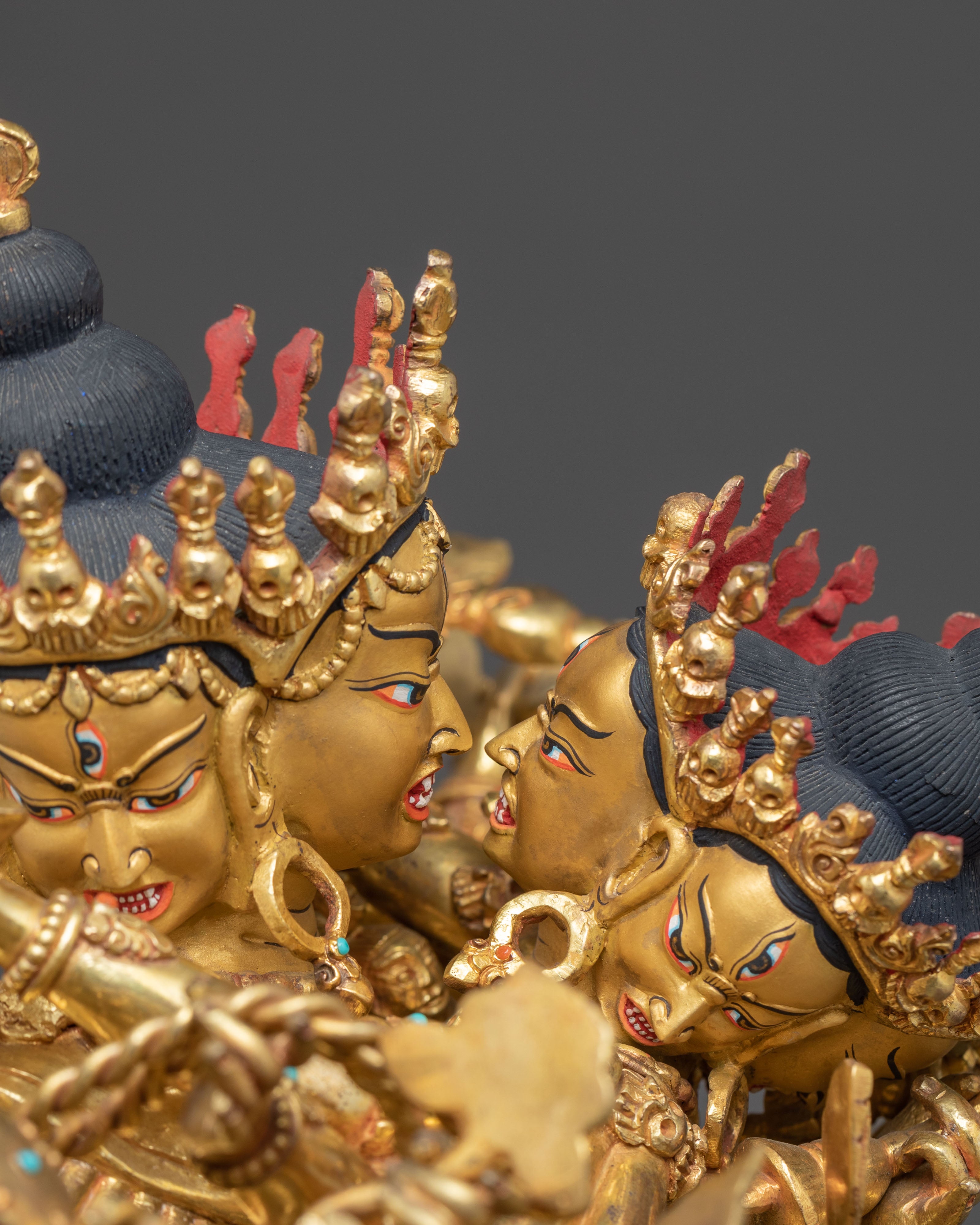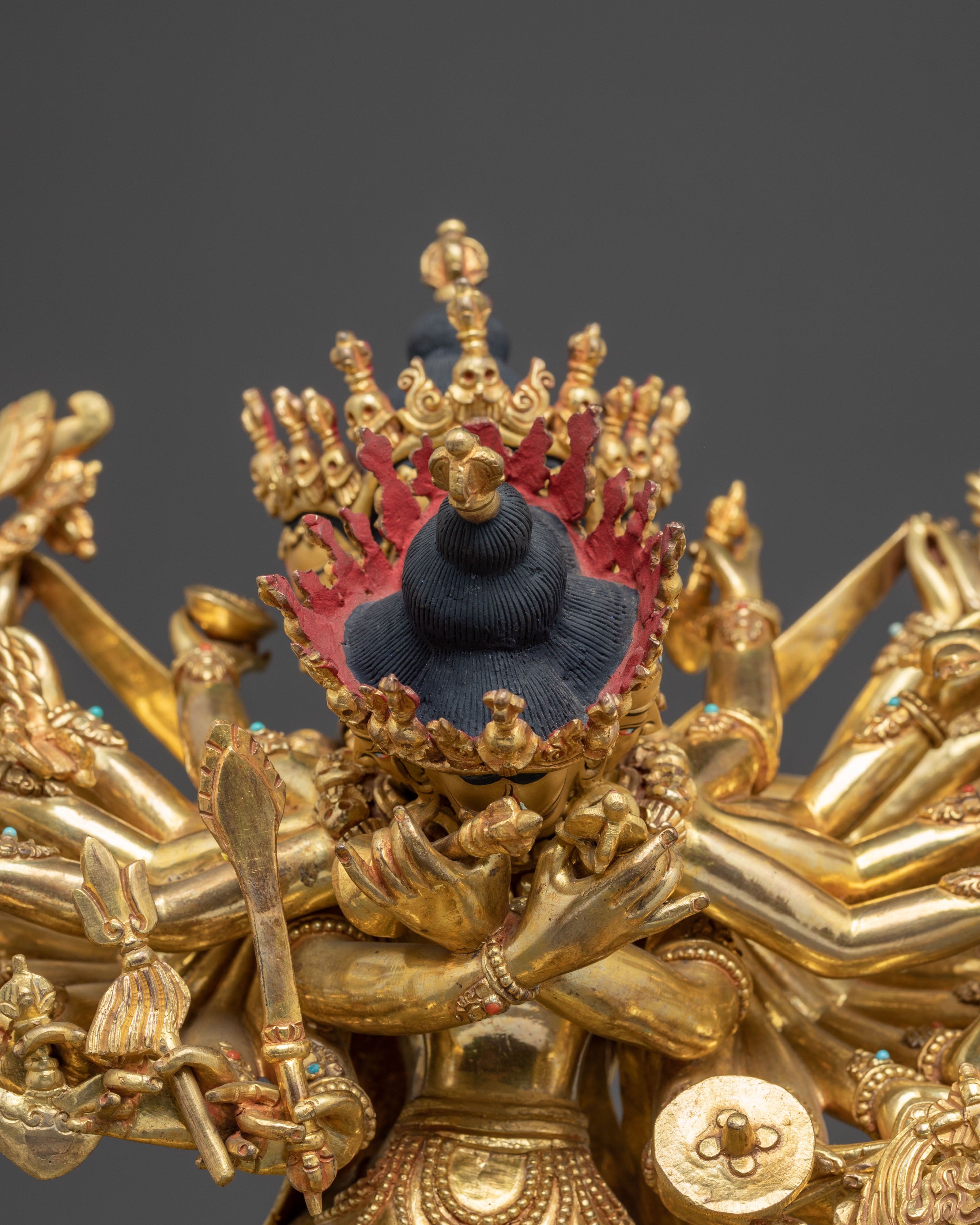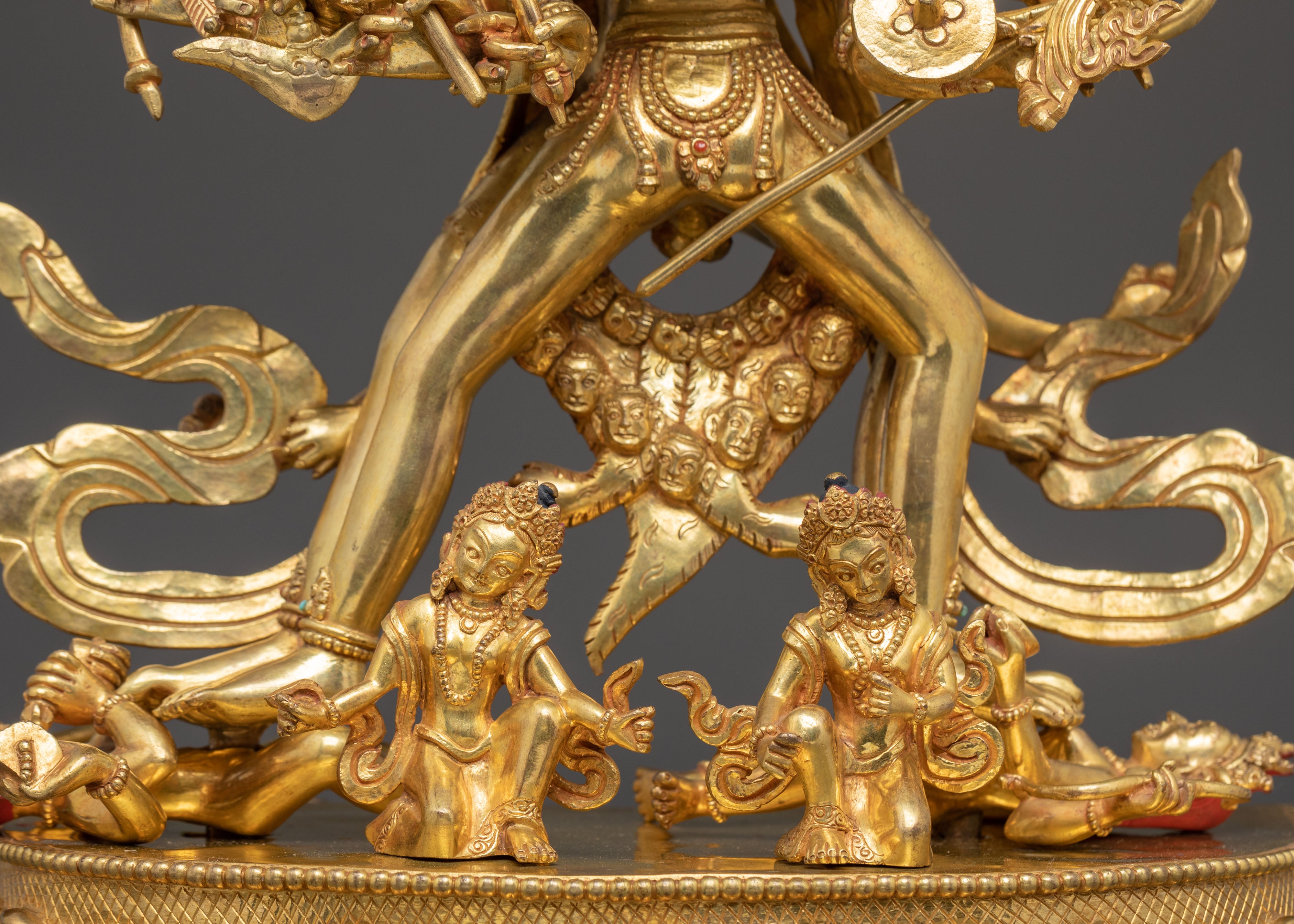Description
Handmade Kalachakra Statue of Wheel of Time | Tibetan Buddhist Sculpture
This handmade statue of Kalachakra, the Wheel of Time, stands at 18.5 inches in height and 13.0 inches in width, weighing 11.08 kg. It is made of copper, covered with a triple layer of 24K gold gilding, and carved with deeply engraved carvings that produce a magnificent 3D-like effect. This sculpture is handcrafted by expert Nepalese artisans, elegantly symbolizing Himalayan Buddhism's sacred traditions, making it an appropriate addition to altars, meditation places, or sacred collections.
Kalachakra, depicted here in his fierce and majestic yab-yum form, embodies the complete union of wisdom and method—the very essence of the Wheel of Time Tantra. His iconography is layered with symbolic depth: he stands in a dynamic warrior posture atop subdued figures, representing the triumph over ignorance and inner obstacles. His multiple faces express omniscient awareness, while his many arms hold an array of ritual implements—vajra, bell, sword, trident, and other tantric symbols—each representing mastery over the elements, the senses, and the cyclical nature of existence. The central pair of hands typically holds the vajra and bell crossed at the heart in vajrahumkara mudra, signifying the inseparable unity of compassion and wisdom. Encircled by a flaming aureole, he radiates transformative energy, burning away impurities and illuminating the path to ultimate liberation. Every aspect of Kalachakra’s form—from the ornaments to the fierce expression—serves as a profound visual teaching on time, impermanence, and the enlightened state beyond all duality.
Size: 18.5”/47cm (Height) x 13.0”/33cm (Width)
Weight: 11.08kg
Materials: 24K Gold Gilded, Acrylic Paintings, Gemstones, Copper Body
In Tibetan Buddhism, the Kalachakra, which translates to "Wheel of Time," is a god connected to time, karma, and the cyclic nature of existence. He represents the orderly flow of time and events and the interconnectedness of all things. The Kalachakra deity and his consort are central to practices aimed at attaining enlightenment, disease prevention, and longevity. These statues serve as powerful reminders of the ever-turning wheel of life and the importance of living mindfully and compassionately.

